If you’re new to the aquarium world, you may be wondering which type of filter is best for your fish tank. When I first started out many, many years ago, I just used the filter that came with my tank, which was a power filter. As the years went on, I realized that there was more than just that type of filter. I noticed a lot of people using canister filters, so I began to ponder the differences and trying to figure out which one was better.
The main difference is that power filters simply hang on the back of the tank and filter the water through a tube. Canister filters are a little more complicated and involve more time and energy to set them up and maintain. Fortunately, there are benefits to each one and understanding them completely is a huge step in figuring out which one is best for your tank.
Canister Filter VS Power Filter Comparisons
| Canister Filter | Power Filter |
|---|---|
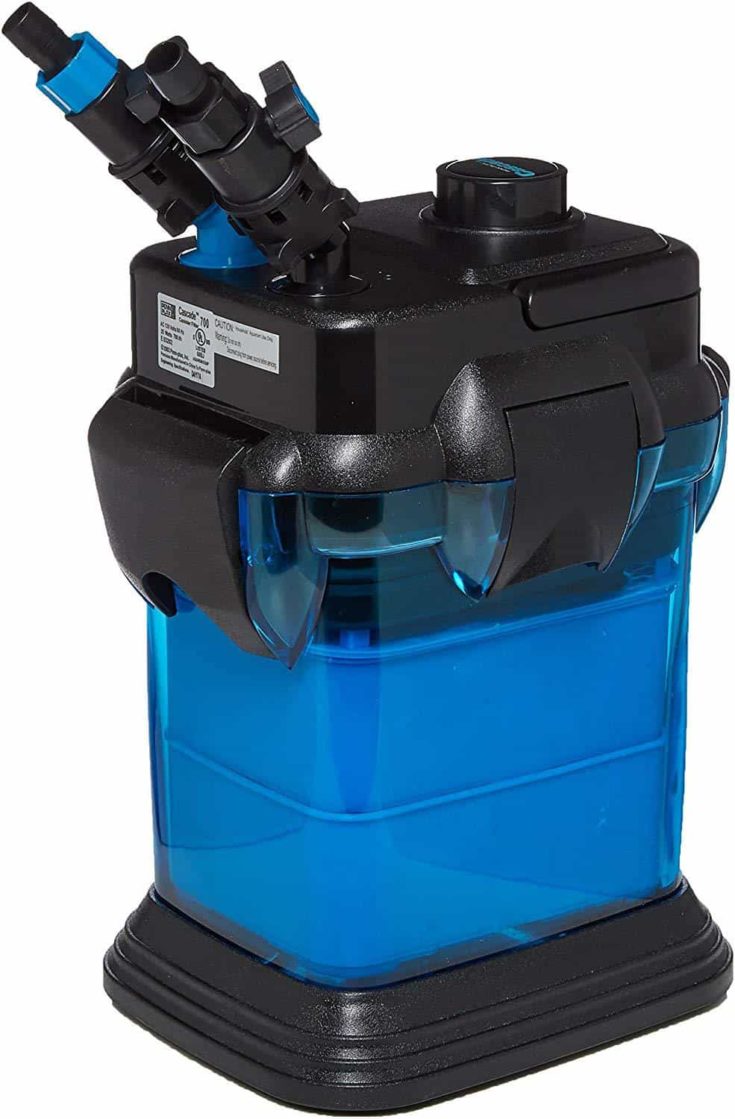 |
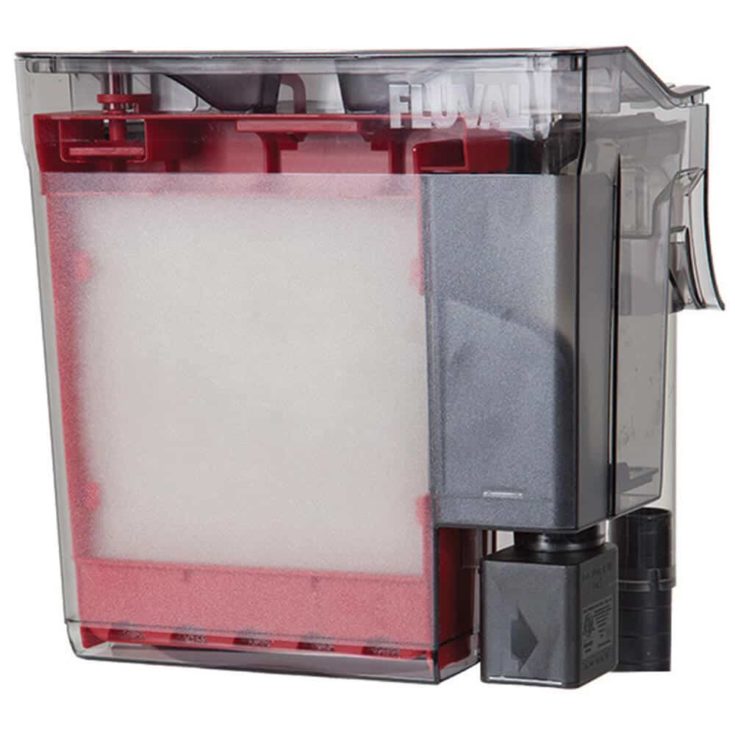 |
|
|
Power Filters
Power filters, like I said above, hang on the back of your fish tank and come in various sizes and shapes. Usually, they will come with your fish tank if you purchase a kit from the store. These are the simplest ones to use and usually the cheapest.
Operation
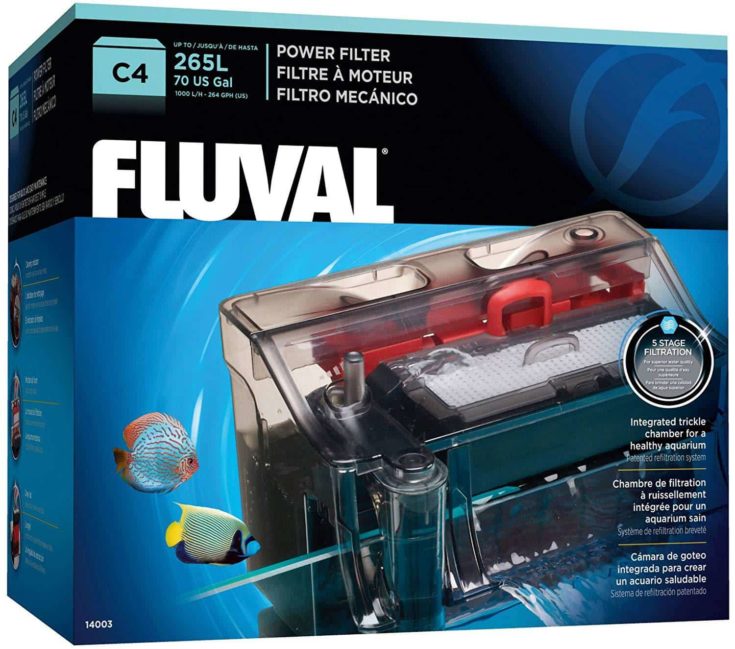
Power filters are simply plugged in, has a carbon filter pad placed inside, is turned on, and voila. The internal pump then draws water from the tank, through the lift tube, and then it passes through the filter cartridge. This cartridge contains the proper chemicals needed to keep the water pure and clean. Although the insides may differ from brand to brand and model to model, they are usually very similar in how they work.
After the water has gone through the filter media, it then releases back into the tank through a spill-way or overflow. Unfortunately, since the water is hitting air on the way back out, there’s going to be quite a bit of evaporation, which means you’ll have to replace the water more frequently than you would with a canister filter.
Maintenance
Maintaining power filters are much easier than canister filters. With power filters, all you have to do is remove the carbon filters, or other type of media depending on what brand and model you have, and replace it. There’s no need to take the filter off of the back of the tank unless you suspect there’s something wrong with the tube that sucks up the water.
It’s not all of the time that you have to replace the filter either. If you are doing a water change and the carbon filter isn’t quite ready to be changed, you can simply rinse it off and put it back in. Once it’s ready to be changed, just swap it out.
Canister filters, on the other hand, are much more difficult to clean because they need to be taken apart, drained, and put back together without disturbing any of the natural bacterial in the setup. This means that the process has to be done quickly and meticulously, ensuring that your fish aren’t killed.
What Should You Be Aware Of?
Power filters may seem like it’s the optimal choice because they are easy to operate, require very minimal maintenance, and they’re really cheap. Unfortunately, they can be really inefficient. The reason is because usually the intake is directly under the spill-way. Since the water being returned is directly under the spill-way, a lot of the water that’s being drawn into the filter is actually the clean water that was just returned to the tank.
Losing Water
Power filters also lose a lot of water in the process between cleaning and returning the water back to the tank. As I said earlier, since the water is exposed to air on the way back, evaporation is greatly encouraged, which means you’ll lose a significant amount of water. This isn’t always a bad thing though. Since there’s an increase in surface area with these filters, the dissolved gas levels will improve. This keeps the oxygen for your fish closer to the amount that;s available in the air.
Losing Fish
Since you need quite a large opening in your tank to accommodate the power filter, this creates an escape route for your fish if the water is too high. This goes for amphibians or crustaceans you have in your tank as well.
Affordability
Power filters are very affordable. Most of the time, they come with your aquarium setup. If you find yourself needing to purchase another one or one for the first time, you can expect to pay anywhere from $10-$50. The $10 ranged ones are usually the ones that are more for smaller tanks such as 5-10 gallons. For these, I would recommend the Marina Power Filter. The $50 ones are for the larger tanks, usually between 50-100 gallons. For these, I would recommend the Fluval C or the AquaClear.
Canister Filter
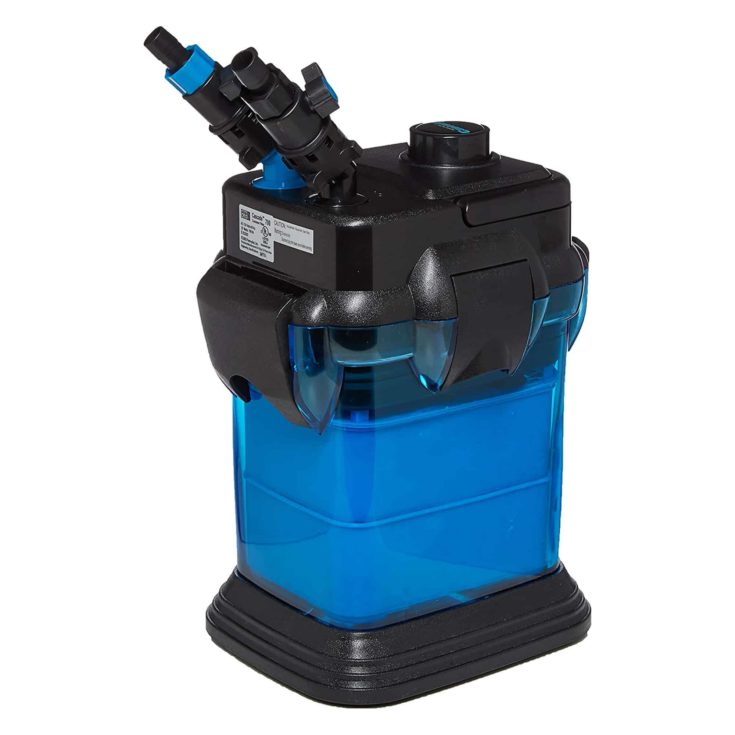
Canister filters are much more reliable when it comes to filtration for saltwater and planted aquariums. They work equally as well for freshwater tanks, too. These types of filters st outside of the tank and use hoses submerged in the tank to filter the water.
These filters aren’t usually the choice for beginners because they require quite a bit of knowledge to set up and maintain. They aren’t like power filters that can just be plugged in and placed on the tank. These require hoses, biological filtration, routine cleanings, and they’re quite expensive.
Operation
Canister filters have tubes that are submerged in the tank. The water is drawn up through a lift tube and into an external filter chamber where the water is then taken through a few different filter medias to clean the water. Depending on the brand of the filter, the direction of the water can be from bottom to top, top to bottom, back to front, outside-in, or center-out.
Depending on the media you use, the filter media can provide biological, chemical, and/or mechanical filtration. After the water passes through the filter media in the sealed canister, it’s them put back into the tank via pump. All canisters use pumps to transport the water since the system is sealed. Most of the canister filters come with integral water pumps that are either built into the cover or the base. Although, some require a separate external water pump.
Maintenance
The maintenance of these filters can vary depending on the model, brand and media used. You can put a variety of filter media in your canister such as baskets, isolated chambers, media bags, and cartridges. You can use these separately or with each other to provide your tank with the right type of filtration for your particular setup.
Some of the media requires you to rinse it out regularly rather than when you see it has stopped filtering properly with a power filter. Some of the media also requires replacement every so often, which could potentially cost you a pretty penny. You’ll also need to clean the tubes, which can be done with tube cleaning kits. Check out this video. It shows you exactly how to clean a canister filter and what exactly is involved in maintaining one.
Sure, maintaining these filters may involve more effort than the power filters, but when it comes to the health of your fish, it may be well worth it.
What You Should Be Aware Of
Canister filters give you more options than a power filter would. By this, I mean that you have more options to choose from when it comes to your filtration and media. The power filters come with the pre-made manufacturer media cartridges. You can mix and match, ensuring your fish and other aquatic creatures have the proper filtration that they need.
Losing Water
Since canister filters are nowhere near the top of the tank and return water through a spray bar, there is a reduction in evaporation and current. You don’t have to worry about the water splashing out while it’s dumping back into the aquarium through the spill-way or just evaporating due to being too close to the surface.
Losing Fish
The same concept goes for losing fish as it does for losing water; you don’t have to worry about that. Since there is no opening at the top of the tank, there’s no reason to concern yourself with fish jumping out. They will remain safely inside of the tank with the closed top since the filter doesn’t require an open top.
Affordability

Unfortunately, canister filters aren’t cheap and this is why some people just stick with the power filters. When you purchase a tank, a canister isn’t going to come with it usually. These filters can run you anywhere from $20 to upwards of over $300 for a high performance one.
Honestly, I would spend the extra cash even for one for a smaller tank, such as the Penn Plax Cascade. This filter can accommodate aquariums between 30 and 200 gallons, depending on which one you choose. If you have a rather large tank and you want only the best, go for the Fluval Fx6. This can accommodate aquariums up to 400 gallons.
Conclusion
As you can see, each one of these filter types offer their benefits and concerns. Honestly, if you have the money for it and the patience, I would choose the canister filter. They do require more effort and maintenance, but they’ll keep your tank in far better condition than a power filter can. Don’t get me wrong, there are really good performing power filters on the market, but honestly, nothing compares to a canister filter, in my opinion. Not only that, but you have more options for media filters than you do with power filters.
I hope you enjoyed this article and if you have any questions, leave us a comment.
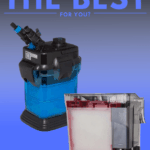
Great info! My first 13 gal tank kit was a rather hurried purchase as I was just buying a snail for my son’s 3.5 gal that has 2 guppies in it. I was sold a rabbit snail which I was told needed no different care than your common apply or mystery snail. After watching it struggle along the gravel substrate for a week or so I ended up buying the 13 gal just for the rabbit snail (which now has 5 offspring and 3 rescued buddies with shell damage that are improving) to fill will fine sand because they LOVE to burrow and their foot is so small and produces such little slime it’s easier for them to get around. I then added two Cory catfish and moved the two guppies over. Learning how to clean this fine sand efficiently and regularly enough was nearly the death of me.
Anyway, today I impulsively bought a 56 gallon tank/stand/lid/light on sale and I am going to keep the rabbit snails in their own tank. With this opportunity to start fresh with this tank I want to carefully consider the filter type, species, etc. so your post was very helpful. Any thoughts, ideas, or tips you have would be so appreciated!
I understand now how to use the cannister filter, but what about cleaning the gravel, does the cannister take care of that issue, or do I need to still vacumn the gravel